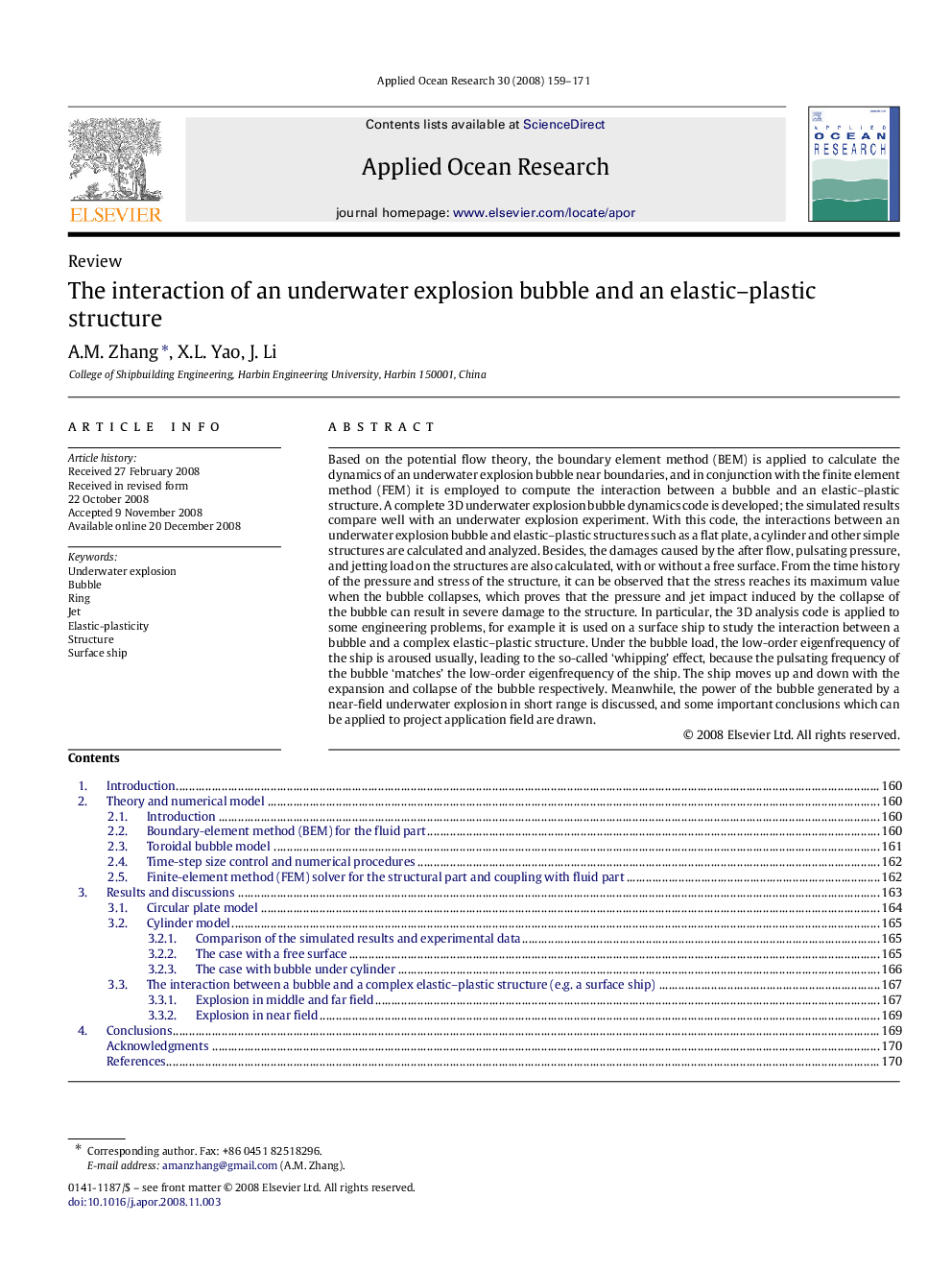| Article ID | Journal | Published Year | Pages | File Type |
|---|---|---|---|---|
| 1720396 | Applied Ocean Research | 2008 | 13 Pages |
Based on the potential flow theory, the boundary element method (BEM) is applied to calculate the dynamics of an underwater explosion bubble near boundaries, and in conjunction with the finite element method (FEM) it is employed to compute the interaction between a bubble and an elastic–plastic structure. A complete 3D underwater explosion bubble dynamics code is developed; the simulated results compare well with an underwater explosion experiment. With this code, the interactions between an underwater explosion bubble and elastic–plastic structures such as a flat plate, a cylinder and other simple structures are calculated and analyzed. Besides, the damages caused by the after flow, pulsating pressure, and jetting load on the structures are also calculated, with or without a free surface. From the time history of the pressure and stress of the structure, it can be observed that the stress reaches its maximum value when the bubble collapses, which proves that the pressure and jet impact induced by the collapse of the bubble can result in severe damage to the structure. In particular, the 3D analysis code is applied to some engineering problems, for example it is used on a surface ship to study the interaction between a bubble and a complex elastic–plastic structure. Under the bubble load, the low-order eigenfrequency of the ship is aroused usually, leading to the so-called ‘whipping’ effect, because the pulsating frequency of the bubble ‘matches’ the low-order eigenfrequency of the ship. The ship moves up and down with the expansion and collapse of the bubble respectively. Meanwhile, the power of the bubble generated by a near-field underwater explosion in short range is discussed, and some important conclusions which can be applied to project application field are drawn.
